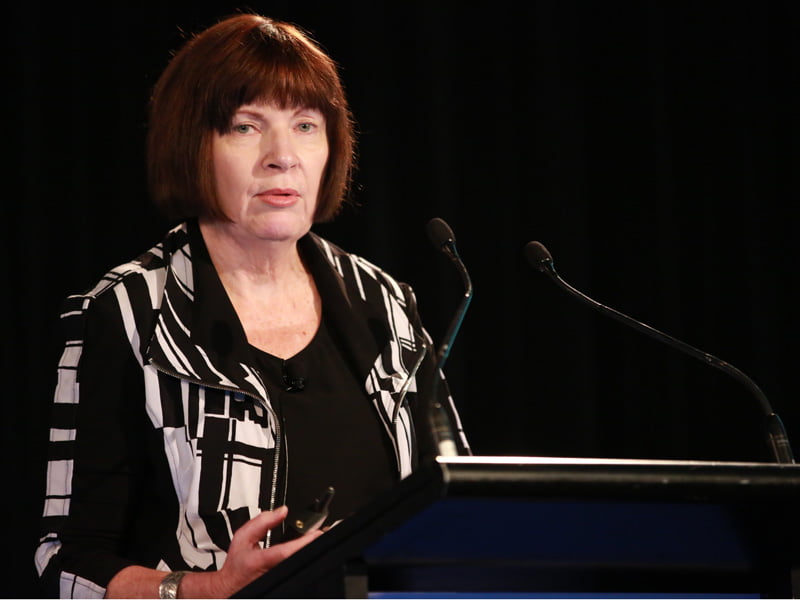The ‘Reinvention program’ at the Australian Taxation Office is as much about changing culture as introducing new technology, the ATO chief information officer Jane King said.
Speaking at the Technology in Government conference in Canberra, Ms King said it has taken some time and effort to unpick some of the cultural mores of a powerful agency of more than 100 years standing.
In the distant past the Tax Commissioner was considered ‘God’, and a “Deputy Commissioner was Deputy God, and you worked back from there,” she said. And while this kind of thinking has long-ago left the ATO, the underlying point of encouraging cultural change remains valid.

Two years ago, it was fair to say that government and sections of the public considered parts of the ATO and its processes for dealing with its client base was “out of touch.”
“Certainly the community was telling us that we were quite archaic in the way that we were doing our business,” Ms King said. “The Reinvention program is very focussed on client experience and also on customer experience. This is very much about making it easy for the tax paying community to do business with us.”
“At the centre of that [Reinvention program] though is our culture … It’s safe to say that we’ve done equal work in the culture as we’ve done on the rest of our business.”
“We are very conscious that if we don’t get the culture right, as it is famously said, strategy is a wonderful thing but culture eats strategy for breakfast every morning,” Ms King said.
“If we don’t get the culture right, we know we are not going to get the rest right. So we are very focussed on this.”
Part of the cultural shift within the organisation relates to how it views itself, Ms King said. Is it a regulator – monitoring and making sure citizens pay their fair share of the tax burden – or are they a service delivery agency, building easy-to-use products that make it simple and easy for citizens to comply.
Of course, it is both, she said. But the service delivery component has grown in importance. And service delivery is not an IT issues – it is a whole-of-organisation, multi-disciplinary endeavour. The ATO obviously has many stakeholders, and many different kinds of taxpayers – from individuals with person income tax, to small businesses, self-funded retirees, multi-nationals and all the rest.
Each needs multiple channels and multiple touch-points. The easier it is to deal with the ATO, the better the compliance rates across all groups.
Ms King said there is clearly a thirst for new and better services through the Tax Office. Some 95 per cent Australian businesses are connected, making up about $250 billion of the ATO’s $300 billion annual collection plate.
When the ATO offers a convenient new service, she says, the take-up is stratospheric.
“Certainly some of the services we’ve turned on have instant take up and I’m talking a million hits within a week,” Ms King said. “We didn’t advertise it, it just happened.”
The myTax service is where the ATO has been able to achieve most, she says. Last year, there were nearly a million returns through the myTax process and by lifting the bar, it expects to get about two million through this year.
She said the ATO is aware the big numbers are likely to be having an impact on tax agents – but says the it makes more sense for someone to use a “tick and flick’ service than pay someone $80 to do the simple tax for you. Regardless, she says Tax is working closely with tax agents to understand the business model and to help find ways where they can better add value to clients.
Ms King said an area of particular focus right now was in simplifying the system for small business. For SME companies that are only accessing four times a year, the authentication key can be a pain. Work is being done now to give small businesses access through the myGov website – to use that to go into the business activity statement area.
The ATO has also launched an app that lets small businesses benchmark themselves against other businesses.
“It gives you all the benchmark data, and you can import a whole range of data into it and it tells you how well you are going as a business,” she said.
We use this product internally … to determine what sort of payment arrangements we should put to you – or should we put any to you – or determine if you not viable, in which case, can we support you to get out of business in a respectful and hopefully in a less emotional way,” she said.
“We decided it is such a good tool that we should put it out there, so you know where your benchmark is and it is that you have to do to get you through the process.”
“It has been incredibly popular.”
Do you know more? Contact James Riley via Email.

